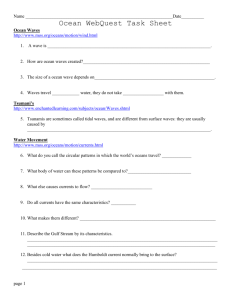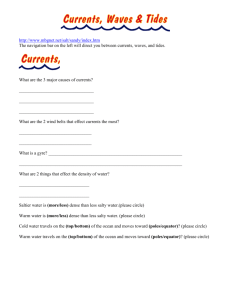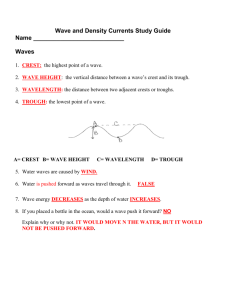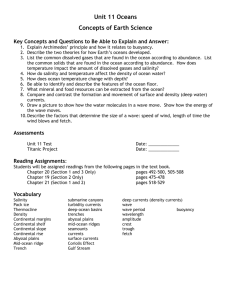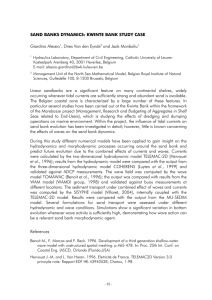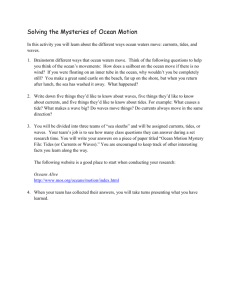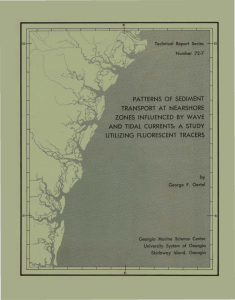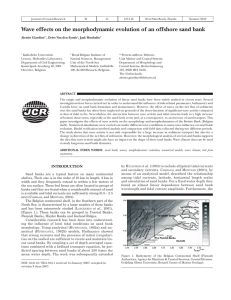CH 16 The Dynamic Ocean
advertisement
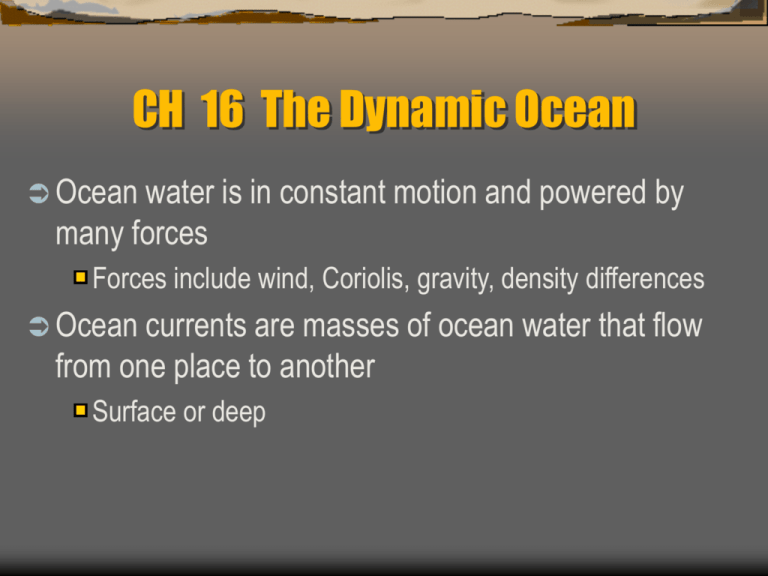
CH 16 The Dynamic Ocean Ocean water is in constant motion and powered by many forces Forces include wind, Coriolis, gravity, density differences Ocean currents are masses of ocean water that flow from one place to another Surface or deep Surface Currents Movements of water that flow horizontally Develop from wind friction Gyres = huge circular moving current systems (5) Coriolis Effect = the deflection of currents to the right in the NH (& left in the SH) due to earth’s rotation Warm currents move from the equator to the poles Cold currents move from polar regions to the equator Cold currents = west coast; warm currents = east coast Deep Ocean Circulation Vertical movement of water Upwelling = cold water rising from deep layers to replace warm surface water Brings nutrients to surface(good for fishing) Density currents = vertical currents of water due to density differences From temperature(cold) and salinity (high) Read pages 451 – 453 Waves Most waves obtain their energy and motion from wind Big wind = big waves Crest = top Trough = bottom Wave height = distance from trough up to crest Wavelength = distance from crest to next crest Wave period = time it takes a full wavelength to pass a fixed position Height, length, & period of waves depends on 3 factors: 1. Wind speed 2. Length of time the wind blows 3. Fetch (distance across body of water) The only thing that really moves forward in a wave is energy(particles move in circular orbital motion) Breakers--Waves that break (fall forward) when the depth of the water is one-half of the wavelength. TIDES Please see other PP SHORELINE PROCESSES/FEATURES BEACH = accumulation of sediment along shores. (white,pink,tan,black,green) SHORELINE (WAVE) FORCES: Eroding Transporting Depositing Wave impact Abrasion Refraction = bending of waves Wave energy is concentrated at headlands = more erosion Wave energy is weakened in bays = more deposition Longshore current = sediments carried along (parallel) to shore due to waves hitting at an angle. EROSIONAL FEATURES: Sea Cliff – result from waves cutting at the base Sea Cave – from softer rock being eroded Sea Arch – cave all the way through Sea Stacks – roof of the arch collapses Wave-cut platform or terrace – from continued wave action causing a flat eroded area DEPOSITIONAL FEATURES: Spit – elongated ridge of sand sticking into the bay Hook – when the spit hooks due to currents Baymouth Bar – when a sand bar completely crosses the bay Tombolo – a ridge of sand that connects an island to the mainland Barrier Islands = (Outer Banks) Stabilizing/protecting shores: Jetties or groins –barrier built at right angles to the beach to catch sand Breakwaters – offshore and parallel to coast Seawalls – parallel to coast often from the shore Beach nourishments Natural protectors: sand bars, sand dunes, fringing reefs, barrier reefs, & atolls
